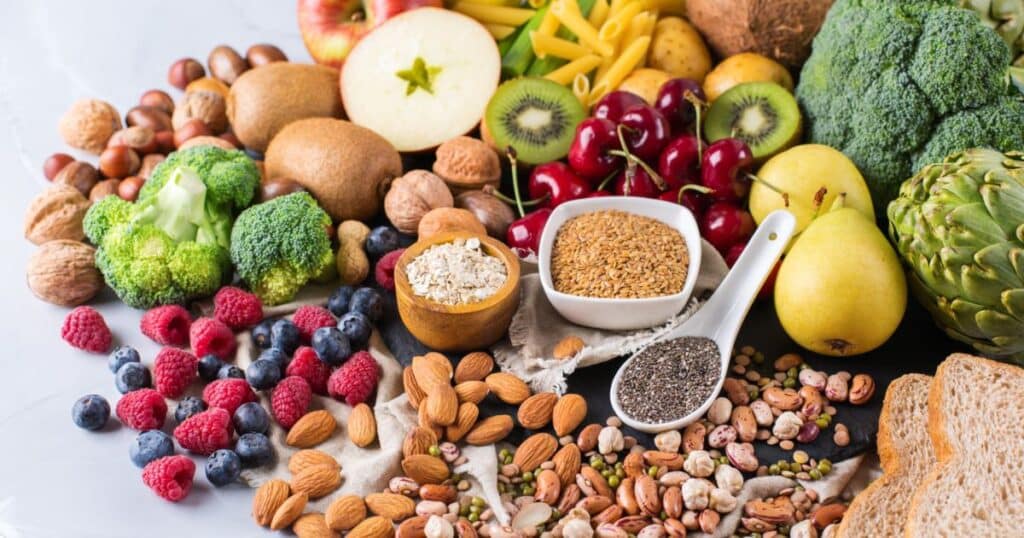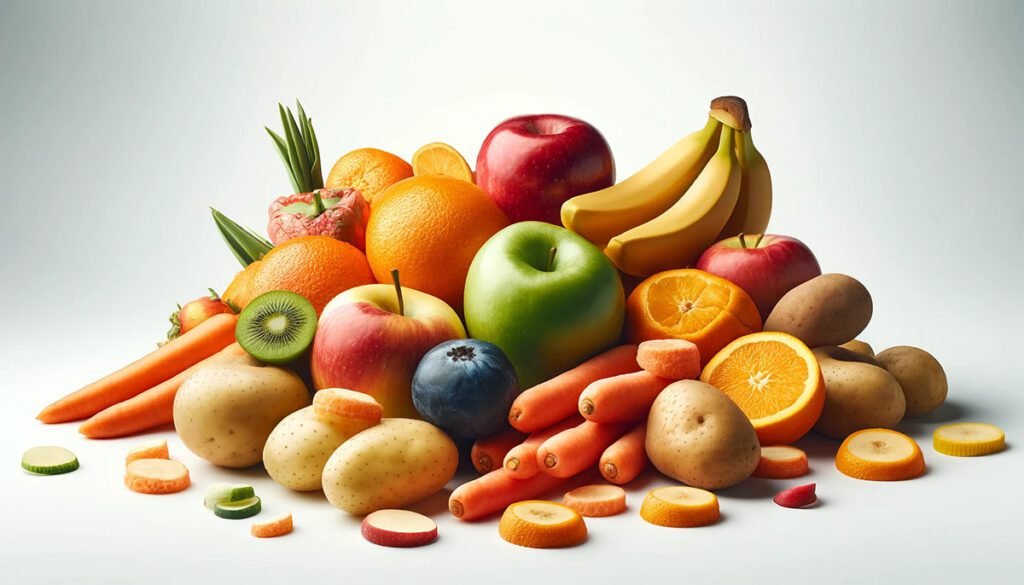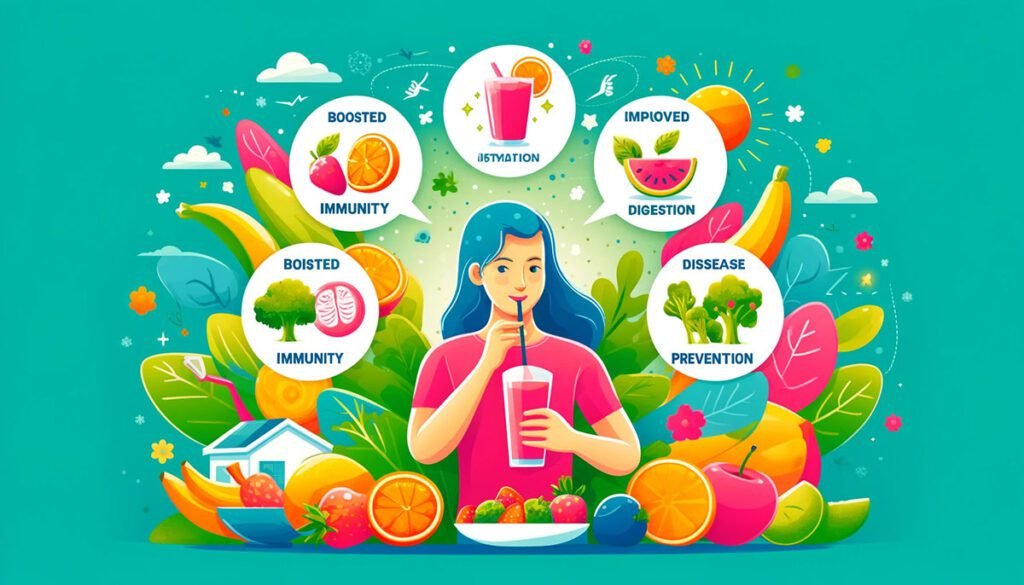Why is “wellhealthorganic.com:eat your peels: unlocking the nutritional benefits” Important?
Incorporating leafy greens into your diet isn’t just a fleeting trend; it can offer significant benefits for your overall health and well-being. Here’s why embracing the nutritional value of greens is important:
Nutritional Value:
Produce from the earth’s fields offers a rich array of essential nutrients, minerals, antioxidants, and dietary fiber. These natural sources boast vital nutrients such as vitamin C, potassium, magnesium, and quercetin. Incorporating these into your diet enhances overall nutrient intake and promotes optimal health.
Reduced Food Waste:
Consuming peels allows you to fully utilize every aspect of the fruit or vegetable, thus reducing food waste. Reducing food waste is crucial for sustainability and environmental conservation efforts. Embracing peels promotes a more mindful and environmentally friendly approach to eating.
Enhanced Digestion:
The presence of fiber in fruits and vegetables promotes healthy digestion and regular bowel movements. Incorporating these foods into your diet can help prevent constipation and support a balanced gut microbiome. Consuming fiber-rich fruits and vegetables can also contribute to a feeling of fullness, aiding in weight management.
Immune System Support:
The antioxidants present in strips aid in fighting oxidative stress and bolstering the immune system. Eating strips may decrease the risk of chronic illnesses such as heart disease and cancer. Regular consumption of nutrient-rich strips supports overall immune function and vitality.
Versatility in Cooking:
Strips have the versatility to enhance a diverse range of dishes, imparting flavor, texture, and nutritional value. Whether incorporated into smoothies, salads, soups, or stir-fries, there are countless opportunities to enjoy the benefits of strips in your meals. Experimenting with strips encourages culinary creativity and the exploration of new flavor profiles.
Cost-Effectiveness:
Consuming strips allows you to enhance the nutritional value of your meals without incurring extra costs. It’s a budget-friendly approach to boosting your nutrient intake and making the most out of your food. Adopting this practice can help stretch your food budget while aligning with your health goals.
In summary, “wellhealthorganic.com:eat your strips: unlocking the nutritional benefits” is significant because it promotes sustainable eating habits, enhances nutritional intake, supports digestive health, boosts immune function, provides culinary versatility, and is cost-effective. By incorporating strips into your diet, you’re not only nourishing your body but also contributing to a healthier planet.
Step-by-Step Guide: “wellhealthorganic.com:eat your peels: unlocking the nutritional benefits”
Understanding the Benefits
Begin by acquainting yourself with the nutritional advantages of leafy vegetable strips. Explore the diverse array of nutrients, minerals, antioxidants, and fiber found in these strips, and understand how they can contribute to your overall health and well-being.
Choosing Organic
Choose organic fruits and vegetables whenever possible to minimize exposure to pesticides and chemicals. Organic produce typically has reduced levels of pesticide residues, making it safer to eat the skins.
Washing Thoroughly
Before using the strips, make sure to thoroughly wash them to remove any dirt, debris, or residue from pesticides. Use a produce brush or simply your hands to clean the strips while rinsing them under running water.
Exploring Culinary Options
Experiment with various fruits and vegetables along with their unique textures to discover novel flavors and sensations. Incorporate slices into various dishes such as smoothies, salads, soups, stir-fries, and baked goods.
Utilizing Citrus Zest
The zest of lemons, limes, oranges, or grapefruits can enhance dishes with a burst of flavor and aroma, all without adding extra calories or sodium. You can extract this citrus zing using a zester or grater.
Embracing Creative Cooking Techniques
Explore innovative culinary techniques for incorporating strips into your cooking repertoire. Experiment with baking or grilling potato skins, sautéing shredded carrot, or incorporating watermelon rind into salads or pickled dishes.
Minimizing Waste
When preparing leafy vegetables, aim to minimize waste by peeling off only the outer layer using a vegetable peeler or knife, preserving as much of the edible portion as possible.
Overcoming Texture Challenges
Some strips may possess a firmer or tougher texture, potentially less appealing to certain individuals. Experiment with various cooking methods or blending techniques to tenderize them and enhance their flavor.
Mixing and Matching
Combine a variety of fruits and vegetables, each with their unique textures, to create delicious and nutritious meals and snacks tailored to your taste preferences. Experiment with diverse ingredients to develop exciting flavor combinations that promote a healthy diet.
Enjoying the Benefits
As you incorporate fruits and vegetable strips into your diet, pay attention to your body’s response. Observe any improvements in digestion, energy levels, and overall well-being as you nourish your body with these nutrient-rich foods. By adhering to this comprehensive guide, you can unlock the nutritional benefits of fruits and vegetable strips and naturally enhance your health. So, concentrate, unleash your creativity in the kitchen, and start reaping the benefits of strips today!
Wellhealthorganic.com:eat your peels: unlocking the nutritional benefits
Often overshadowed and underestimated, strips play a crucial role in maintaining optimal health. Contrary to common misconceptions, these outer layers of fruits and vegetables contain more essential nutrients, minerals, and fiber than their flesh. Overlooking these nutrient-rich peels could mean neglecting a significant portion of their nutritional benefits, potentially jeopardizing your health.
One of the most notable advantages of incorporating peels into your diet is their abundant fiber content. Fiber is essential for digestion, promoting regular bowel movements, and preventing constipation. Additionally, dietary fiber is renowned for reducing the risk of heart disease, diabetes, and various cancers. Including peels in your daily meals can significantly increase your fiber intake and enhance your overall digestive health.
Peels also boast a wealth of antioxidants, compounds renowned for their ability to neutralize harmful free radicals in the body. Free radicals are unstable molecules that cause oxidative stress, leading to cell damage and increasing the risk of chronic diseases like cancer and cardiovascular issues. The antioxidants found in peels, including flavonoids and polyphenols, actively combat oxidative stress, preserving cell integrity and promoting longevity.
Citrus peels, in particular, stand out as nutritional powerhouses, containing high levels of L-ascorbic acid, flavonoids, and revitalizing oils. Research highlights their anti-inflammatory and antimicrobial properties, making citrus peels essential for strengthening immune defenses and fighting infections. Moreover, the flavonoids in citrus peels have been associated with a reduced risk of heart disease and improved cardiovascular function.
Advantages and Disadvantages of Wellhealthorganic.com:eat your peels: unlocking the nutritional benefits
Benefits of WellHealthOrganic.com: Discover the Nourishing Advantages through Eat Your Strips.
Challenges faced by WellHealthOrganic.com: Discover the Benefits of Eating Your Strips.
Facts
- Nutritional Value:
- Fruit and vegetable peels contain essential nutrients like fiber, vitamins, minerals, and antioxidants vital for overall health.
- Reduced Food Waste:
- Incorporating peels into your diet reduces food waste by utilizing all parts of the produce, promoting sustainability.
- Enhanced Digestion:
- The fiber in peels supports healthy digestion and regular bowel movements, preventing constipation and maintaining gut health.
- Immune System Support:
- Antioxidants in peels combat oxidative stress, strengthening the immune system and potentially reducing the risk of chronic diseases.
- Versatility in Cooking:
- Peels can enhance a wide range of dishes, adding flavor, texture, and nutrition, encouraging culinary creativity.
- Cost-Effectiveness:
- Including peels in meals maximizes nutritional value without added cost, making it a budget-friendly way to boost nutrient intake.
Recipes and Tips
Creative Ways to Incorporate Peels into Meals
From fruit zest to vegetable crisps, there are countless creative ways to incorporate peels into recipes. Try adding citrus zest to salads, blending vegetable peels into smoothies, or baking fruit peel chips for a nutritious snack.v
Cooking Methods for Maximum Nutrition
To preserve the nutritional value of peels, opt for cooking methods that retain nutrients, such as steaming, roasting, or lightly sautéing. Avoid deep-frying or boiling, as these methods can leach nutrients from the peel.wellhealthorganic.com:eat your peels: unlocking the nutritional benefits
Environmental Impact
Reduction of Food Waste
Eating peels is not only beneficial for health but also for the environment. By utilizing the entire fruit or vegetable, individuals can reduce food waste and minimize their carbon footprint.
Sustainability Practices
Choosing to eat peels aligns with sustainable food practices, as it maximizes the use of natural resources and reduces the demand for single-use packaging. Additionally, incorporating peels into meals encourages creativity in the kitchen and fosters a deeper connection to food.wellhealthorganic.com:eat your peels: unlocking the nutritional benefits
Comparative Analysis
Peels versus Pulp: Which Is More Nutritious?
While both the peel and pulp of fruits and vegetables contain valuable nutrients, peels often have higher concentrations of certain vitamins, minerals, and antioxidants. However, the nutritional content may vary depending on the type of produce and its growing conditions.
Common Misconceptions
Addressing Concerns About Pesticide Residue
One common misconception about eating peels is the concern over pesticide residue. While pesticide residues can be present on the surface of non-organic produce, thorough washing and proper preparation can significantly reduce exposure.
Debunking Myths About Bitterness
Some individuals avoid eating peels due to perceived bitterness. However, not all peels are bitter, and bitterness can vary depending on the type of fruit or vegetable. Experimenting with different varieties and preparation methods can help discover enjoyable ways to incorporate peels into meals.
Antioxidants and Other Hidden Perks of Eating the Peel

Beyond their impressive vitamin and mineral content, fruit and vegetable peels are also rich sources of antioxidants and other beneficial compounds that can profoundly impact your health. Let’s delve into some of the hidden perks of eating peels:
Antioxidant Power
Peels are packed with powerful antioxidants that help protect your cells from damage caused by free radicals, which can contribute to the development of various chronic diseases:
- Carotenoids: Compounds like beta-carotene and lycopene, found in abundance in pumpkin, carrot, and sweet potato peels, have been shown to have potent antioxidant and anti-inflammatory properties, potentially reducing the risk of certain cancers.
- Flavonoids: These plant-based compounds, such as anthocyanins (found in cabbage, red grapes, and berries), have been linked to lower levels of inflammation and a reduced risk of chronic diseases like heart disease and certain types of cancer.
- Ellagic acid: Present in strawberries and raspberries, this antioxidant has been associated with a lower risk of heart disease and may also possess anti-cancer properties.
Mood-Boosting Compounds
Did you know that citrus peels contain aromatic compounds like limonene and naringin that have been shown to have calming and mood-boosting effects? These compounds may help alleviate stress and anxiety, making citrus peels a valuable addition to your diet for both physical and mental well-being.
Detoxification Support
Consuming fruit and vegetable peels may also support your body’s natural detoxification processes. These nutrient-dense skins can stimulate bile production, which helps to emulsify and remove toxins from the body. Peels may support phase 2 liver detoxification, further enhancing your body’s ability to eliminate harmful substances.
By incorporating peels into your diet, you’re not only getting a boost of vitamins, minerals, and fiber, but also a wide array of antioxidants and other protective plant compounds that can have profound impacts on your overall health and well-being.
Tips for Conveniently Adding More Peels to Your Meals

Now that you understand the incredible nutritional benefits of fruit and vegetable peels, you may be wondering how to incorporate them into your diet easily and conveniently. Here are some simple tips to help you get started:
- Bake Peel Chips or Fries: Transform sweet potato or pumpkin peels into deliciously crunchy chips or fries by tossing them with a little oil, herbs, and spices, and baking until crispy. These make for a fiber-rich, nutrient-packed snack or side dish.
- Blend Peels into Smoothies: Add nutrient-packed citrus or banana peels to your morning smoothie or juice for an extra antioxidant punch. Just be sure to remove any bitter white pith from the citrus peels first.
- Use Peels in Soups and Sautees: Instead of peeling carrots, zucchini, or potatoes, simply grate or thinly slice them (with peels on) and add them to your favorite soups, stews, or sauteed dishes for an extra boost of fiber and nutrients.
- Eat Raw Peels with Dips: Enjoy the peels of apples, pears, kiwis, mangoes, and papayas raw by dipping them in nut butter, yogurt, or hummus for a portable and nutritious snack.
- Zest and Bake with Peels: Use the zest of citrus peels to add flavor and nutrients to baked goods like cookies, cakes, and breads. You can even try making sweet orange peel candy for a tasty treat.
- Get Creative with Veggie Scraps: Don’t toss those turnip greens, beet stems, or broccoli stalks! Roast them with a bit of oil and seasoning for a flavorful and nutrient-dense side dish or snack.
Remember, the key is to start slowly and incorporate peels gradually into your meals and snacks. Begin with one or two types of peels that you enjoy, and experiment with different recipes and preparation methods to find what works best for you and your family.
THE NUTRITIONAL PROFILE OF FRUIT AND VEGETABLE PEELS

Overview of Nutrients
Fruit and vegetable peels are rich in vitamins, minerals, and antioxidants, often surpassing the nutritional value of the flesh. These nutrients are vital for maintaining good health and preventing chronic illnesses. Peels contain polyphenols and carotenoids, potent antioxidants that guard against oxidative stress and reduce inflammation.
Fiber Content
Peels are a great source of dietary fiber. Fiber is crucial for digestion, helping to ensure regular bowel movements and prevent constipation. It also aids in weight management by promoting satiety and lowering overall calorie intake. Additionally, fiber helps regulate blood sugar levels, which benefits people with diabetes.
Specific Examples
- Apple Peels: Rich in quercetin, an antioxidant with anti-inflammatory and antihistamine effects. High in fiber, they help lower cholesterol, contributing to heart health.
- Banana Peels: Loaded with potassium, essential for heart and muscle function. They also contain tryptophan, which improves mood and sleep.
- Orange Peels: Packed with vitamin C and flavonoids like tangerine and nobiletin, which have anticancer and antidiabetic properties. They also contain pectin, a fiber that supports digestion.
- Potato Peels: An excellent source of iron, potassium, and vitamin C, along with significant fiber, which aids digestion and supports a healthy gut microbiome.
By understanding the nutritional value of these peels, you can make informed choices about adding them to your diet for better health.
HEALTH BENEFITS OF CONSUMING PEELS

Digestive Health
Eating fruit and vegetable peels can greatly improve digestion due to their high fiber content. Fiber adds bulk to stool, promoting regular bowel movements and preventing constipation. It also acts as a prebiotic, feeding beneficial gut bacteria and supporting a healthy microbiome. This can improve nutrient absorption and reduce gastrointestinal issues like irritable bowel syndrome (IBS).
Immune System Boost
Vitamins and antioxidants in peels boost the immune system. Orange peels, for example, are rich in vitamin C, an antioxidant that enhances immune function by stimulating white blood cell production. Polyphenols and carotenoids in various peels protect cells from oxidative damage, lowering the risk of chronic illnesses and infections.

